The design inherent in pilots’ watches is rooted in the history of aviation, starting with the early pioneers, followed by the First and Second World Wars, and on to the era of jet powered flight. There are certain manufacturers whose histories are inextricably linked to aviation – think of Longines, Zenith, Cartier, and IWC Schaffhausen to name but a few.
In this article we will look at some of the characteristics which make a pilot’s watch what it is and check out some contemporary examples.
Pilots’ watches are amongst the most popular types of watch available, which is perhaps unsurprising considering one of the foremost characteristics of a pilot’s watch is legibility. The design language is born of their history of having originally been used as cockpit tools during the World Wars.
The first watch designed specifically for use by a pilot was, however, much earlier, when Louis Cartier created a wristwatch for his pilot friend Alberto Santos-Dumont in 1904, the year after the Wright Brothers first flew in 1903. Santos-Dumont requested a wristwatch to be able to time his flights more easily, the pocket watches of the time were just not practical for this.
A few years later in 1909, Louis Blériot became the first person to fly across the English Channel, with a Zenith Pilot strapped to his wrist.
Of course, today a pilot doesn’t strictly need a wristwatch, however their enduring popularity has ensured there are still plenty on the market and the general designs have changed very little. So, what exactly are the common characteristics of pilot’s watches?
What is a pilot’s watch?
The most important requirements of a pilot’s watch are that it must be, above all else, both functional and legible – after all, it is a tool watch designed for a specific purpose.
With this in mind, it makes sense that pilots’ watches tend to be of a larger size – this provides more real estate on the dial to include larger numerals and thicker hands, making it easier to tell the time with just a quick glance. The colours used on the dials often tend to be highly contrasting as well, such that the hands and numerals stand out on the dial, and require the absolute minimum effort to identify, read and interpret.
Quite often, this results in a dark dial with bright, contrasting indices or numbers and large, contrasting hands (or vice-versa with a bright dial and dark indices and hands). On occasion this is accompanied by an ‘orientation triangle’ marker at 12 o’clock to help easily spot the 12 o’clock position, the intent being that this can expedite the time taken to read the time, too.
All of these are also commonly coated in luminescent material to ensure legibility in even the darkest conditions – the origins for this were, of course, night flights. Early adopters of these particular pointers include the German Luftwaffe’s ‘fliegeruhr’ (or flieger) and ‘B-Uhr’ designs, which remain popular to this day.
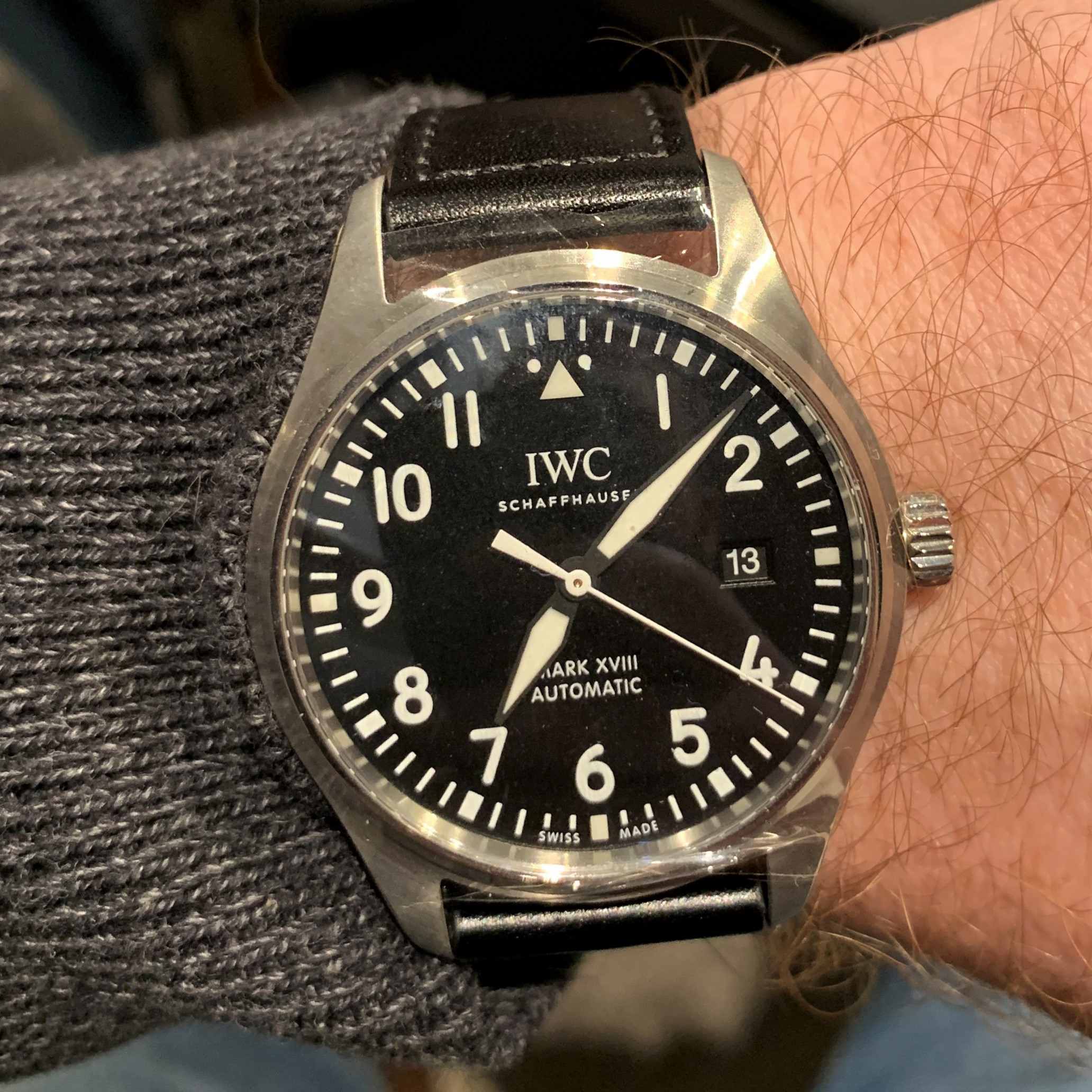
An IWC Schaffhausen IW327009 – a modern example of the popular ‘fliegeruhr’ designs of World War Two; note the black dial, contrasting white hands and numerals, and orientation triangle at 12 o’clock.
Historically, early pilots’ watches were fitted an oversized crown for winding. This design feature was included as early pilots would often wear thick leather gloves, and introducing these larger crowns ensured that the pilots were still able to wind the watch without having to take their gloves off. Today of course, pilots no longer have the need to wear gloves during flight and so this feature is less prevalent than it once was, however it is often incorporated into reissues of pieces from history, or collections celebrating a vintage aesthetic.
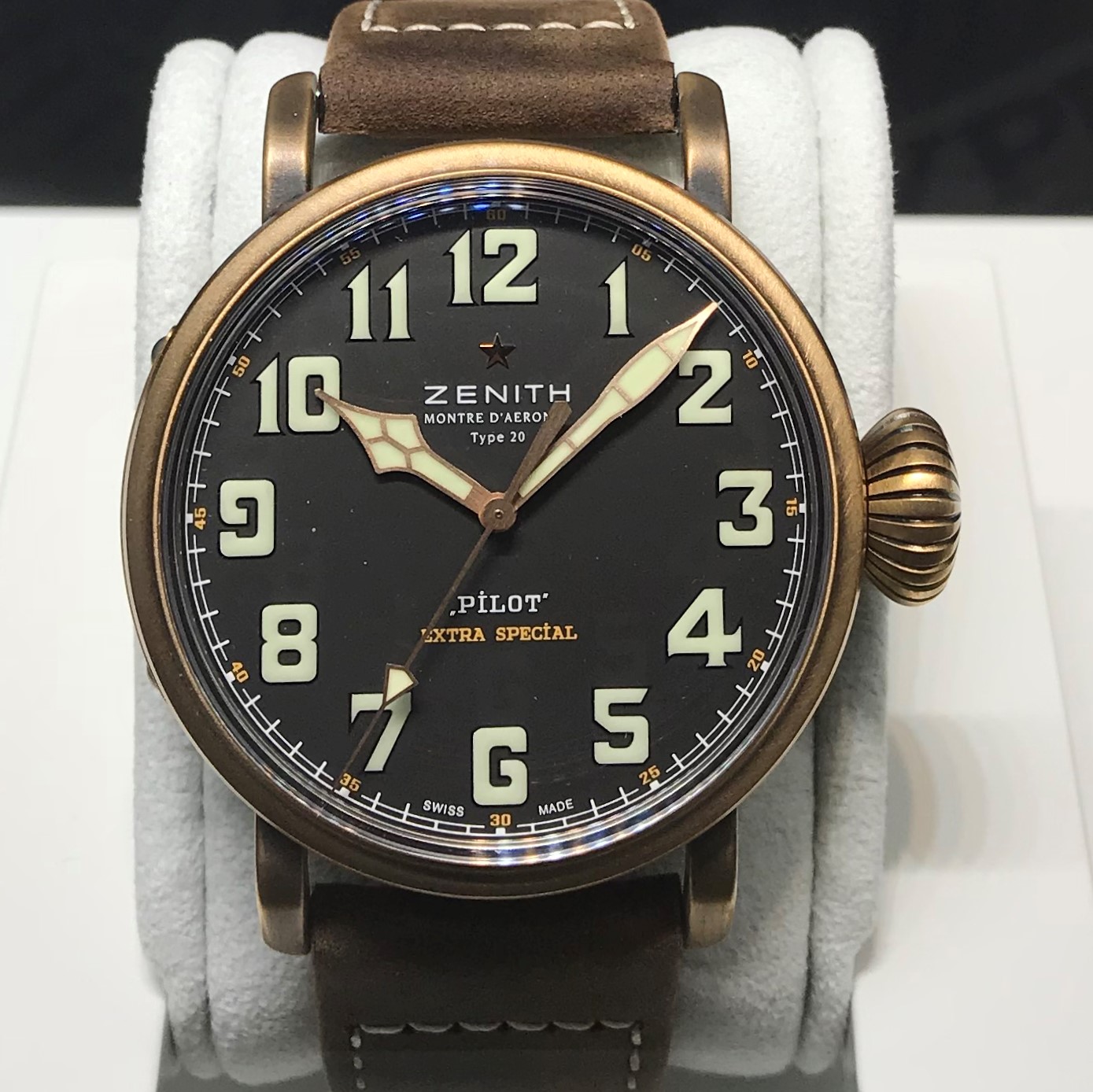
Zenith Pilot Type 20 29.2430.679-21.C753; note the oversized ‘onion’ crown at 3 o’clock. Incidentally, Zenith is the only watch trademarked to use the word ‘Pilot’ on its dials.
The two watches highlighted so far have not included any complications, with a focus on showing only the time. There are, however, certain complications which you are equally likely to find on a pilot’s watch. The inclusion of any complications will always for a specific reason – for example, you are unlikely to find a moon-phase indicator or a tourbillon in a pilot’s watch as they serve no purpose.
Examples of complications used in pilots’ watches are the chronograph, or a flyback chronograph (which eliminates the need for a stop-reset-start 3 pusher combination, replacing it with a single pusher to restart the chronograph). In the 1950s, the inclusion of an additional time zone in the form of a “GMT-hand” (you can read more about this complication here) – first with the Glycine Airman in 1953, followed in 1954 by the Rolex GMT Master – became popular as the era of jet flight came to the fore.
Perhaps the most distinctive addition for pilots’ watches would be the iconic slide-rule bezel – this was invented by Breitling as a mechanical calculator to assist with all types of in-flight calculations to do with speed, distance, conversions between different units and more.
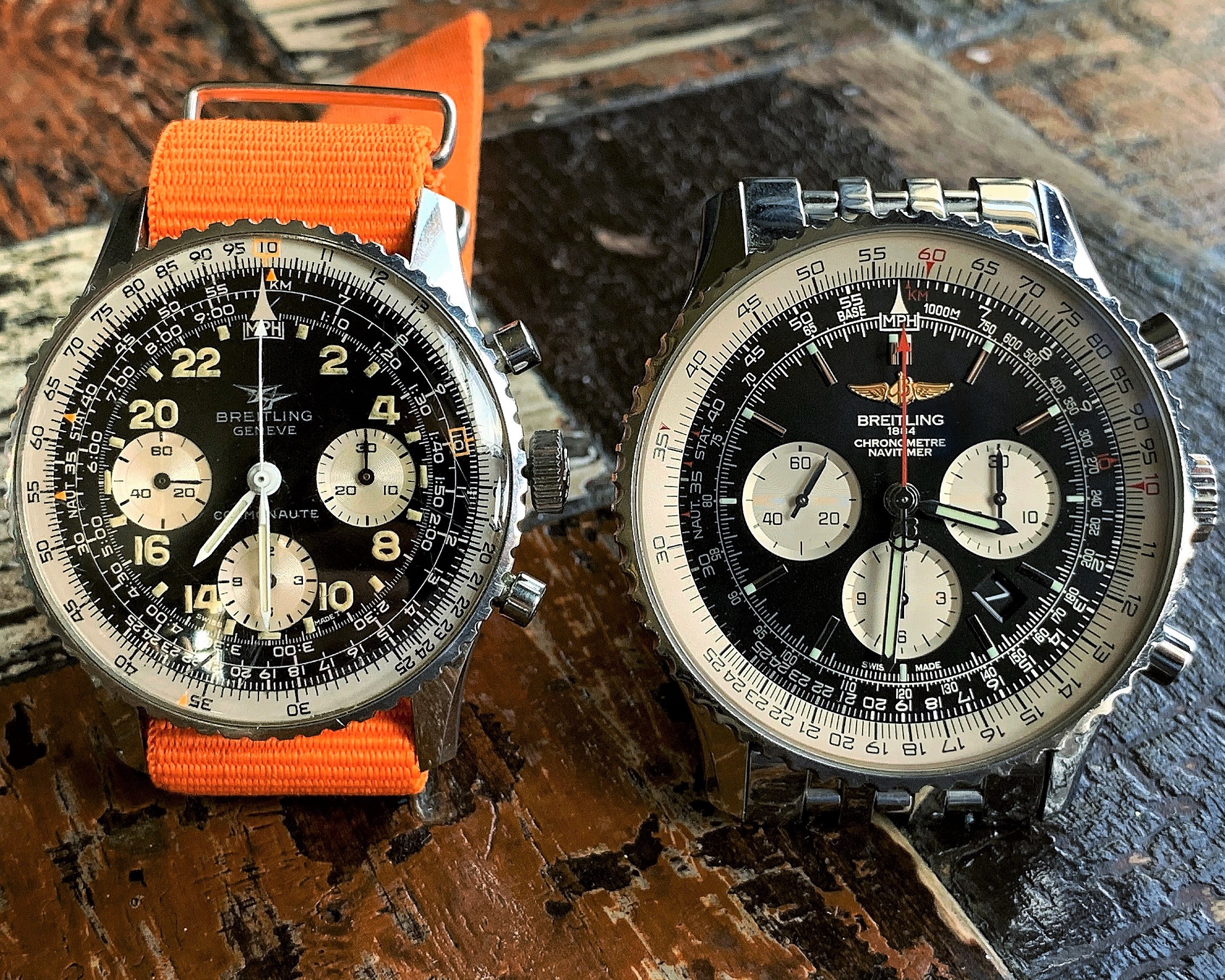
1967 Breitling Cosmonaute 809 (L) and 2015 Navitimer B01 (R); between them showcasing chronograph, and slide rule bezel complications. Notice the 24-hour scale (L) with the hour hand rotating once every 24 hours instead of every 12.
One final requirement of a pilot’s watch is the need to be able to withstand a harsh environment. Whilst the cockpits of modern-day airliners might be relative luxury compared to those of the 1950s and 1960s, military aircraft and fighter jets are certainly not an easy environment in which to operate for the highly skilled pilots who inhabit them, let alone for mechanical timepieces!
Born of a request in 2007 from British ejection-seat manufacturer Martin-Baker, Bremont introduced the Martin-Baker collection in 2009, which is capable of withstanding the immense forces pilots are subjected to during the process of ejecting from an aircraft. Testing for the Martin-Baker watches includes extreme temperature endurance from 24 hours in an environment of -40°C followed by another 24 hours in +40°C, altitude testing, vibration testing, subjecting the watch to extreme salt-fog and humidity akin to what an aircraft carrier would experience over 6 months, and – of course – live ejection. In addition, the watch is water resistant to 100 metres. Not bad for a mechanical watch!
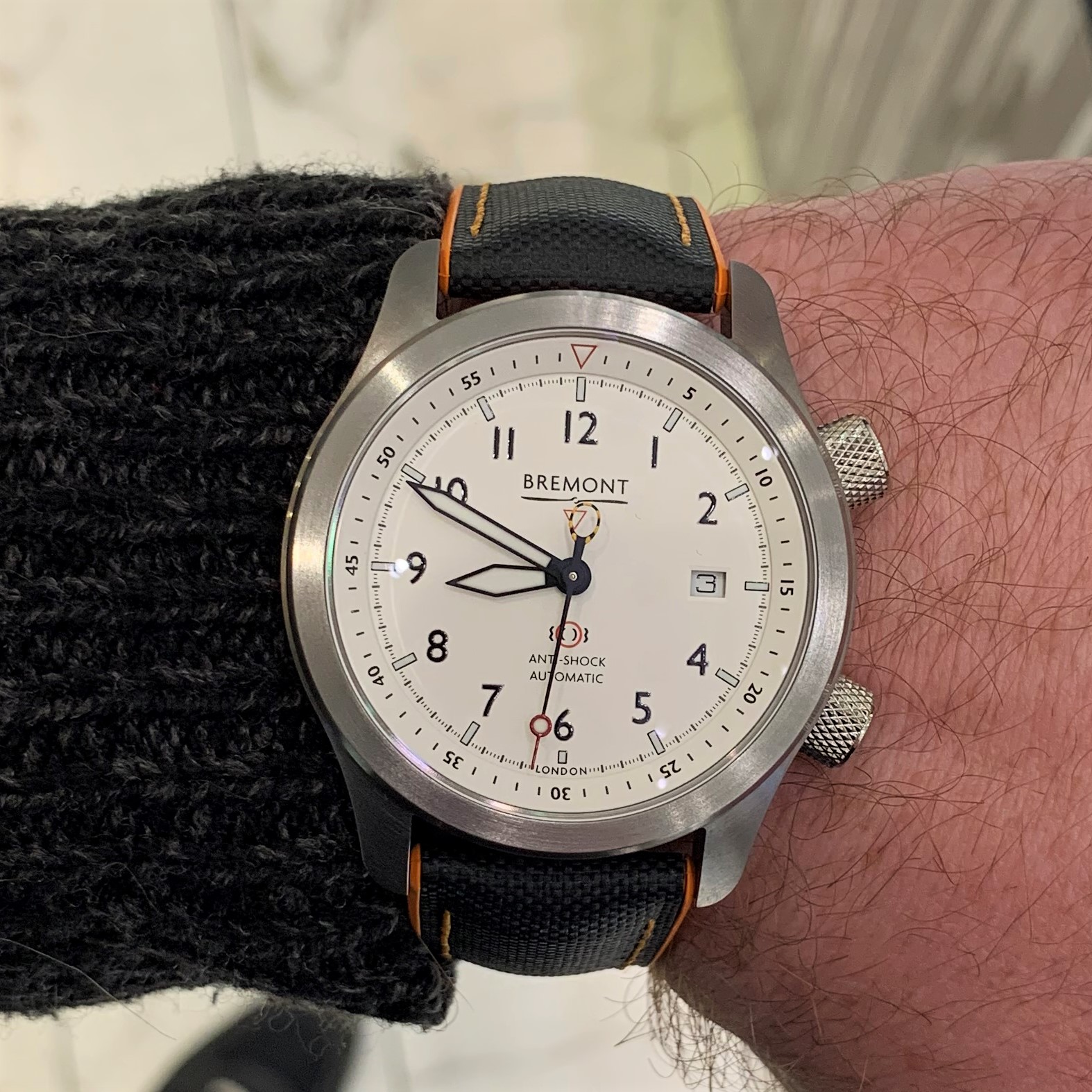
Bremont Martin-Baker MBII; in addition to the shock resistance described above, note the contrasting dial, hands and numerals, and red orientation triangle at 12 o’clock
Military Pilots’ Watches
The aesthetics of popular modern pilot watches are often determined by military specifications issued by various air forces decades ago. One of the most prominent and enduring has been the French ‘Type 20/21’ specifications from the 1950s, loosely based on the ‘fliegeruhr’ watches produced by the likes of Hanhart, Tutima and Glashütte.
The French Air Force called for hand-wound, two-register, 30-minute chronographs with a flyback function, to have a black dial with luminous Arabic numerals, at least 35 hours power reserve, and high degrees of both accuracy and reliability. Several of the manufacturers that initially responded to this call have since disappeared, but the popularity of the Type 20 has not waned.
A typical example is Airain – originally part of the French Dodane family group – which ceased to exist but has now been revived by Dutch watchmaker Tom van Wijlick and will be issuing a new Type 20 based on the original model this year.
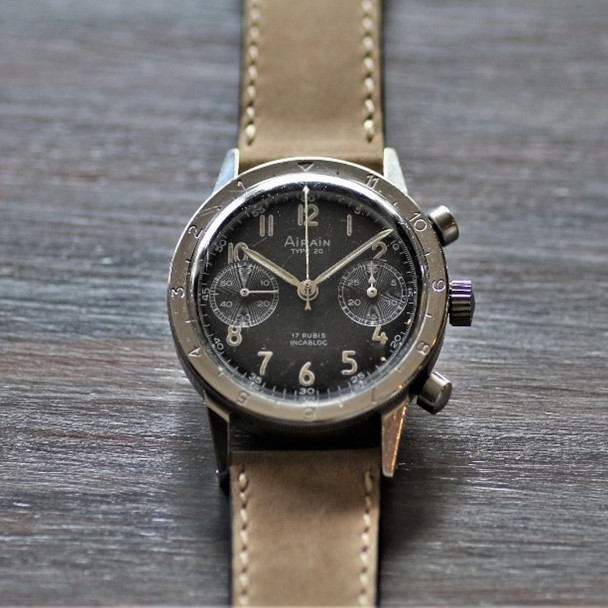
An Airain Type 20 from the Sixties, typical of the Type 20 ‘look’ and issued with a Valjoux caliber 222. These movements were robust and reliable, and turned out to be popular for military specification watches, photo – @tickertalker
Breguet’s Type XX/XXI/XXII series is another great example. Interestingly, one of Abraham Louis Breguet’s descendants also played a major role in early French aviation, having been involved in the development and production of various Breguet aircraft in the First World War. There is something quite romantic about the idea of a pilot unknowingly flying in a Breguet aircraft whilst wearing a Breguet watch!
This early design was also revived for the Breguet contribution to OnlyWatch 2019.
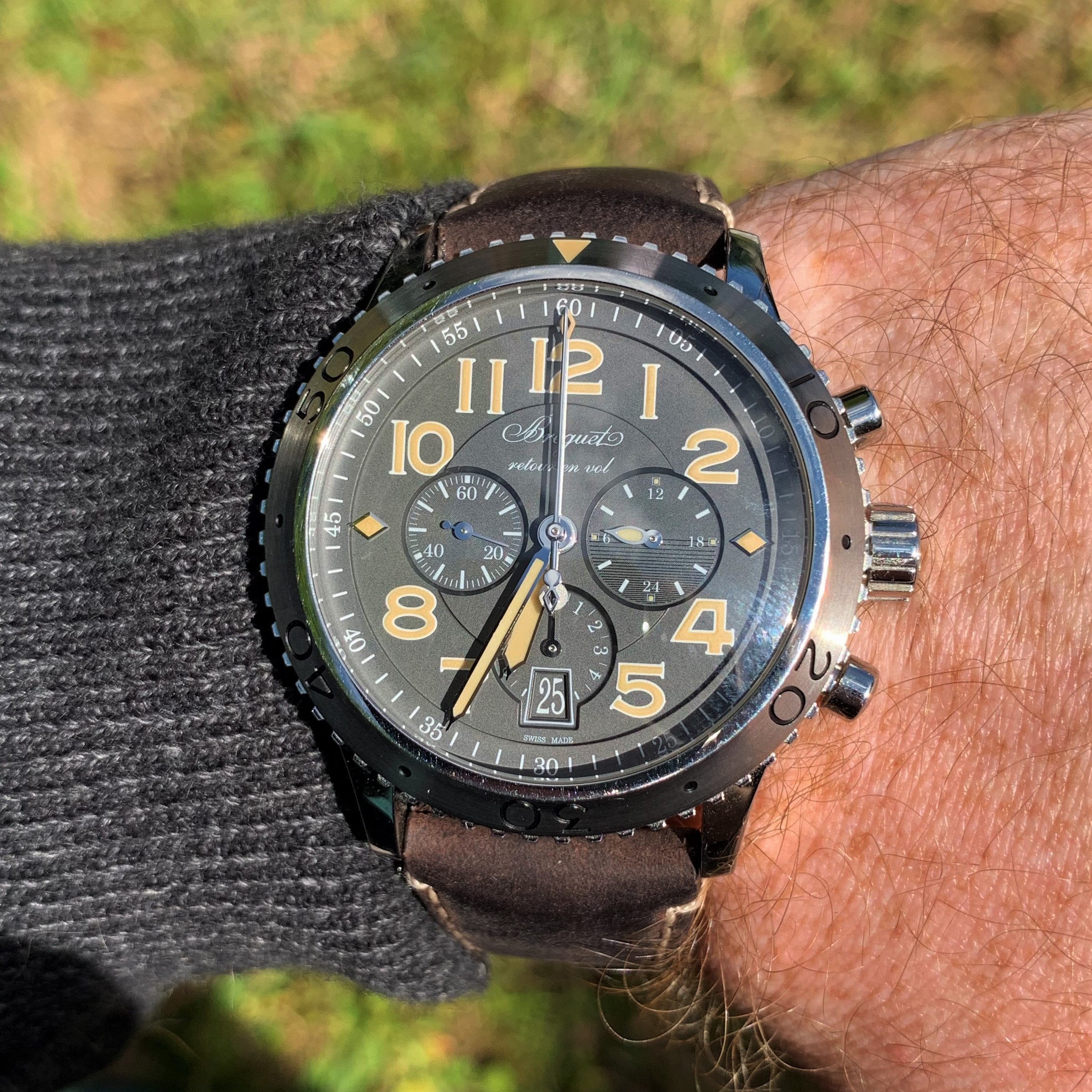
A Breguet Type XXI Flyback 3817ST/X2/3ZU, showing off its large, luminous numerals and separately-styled sub-dials.
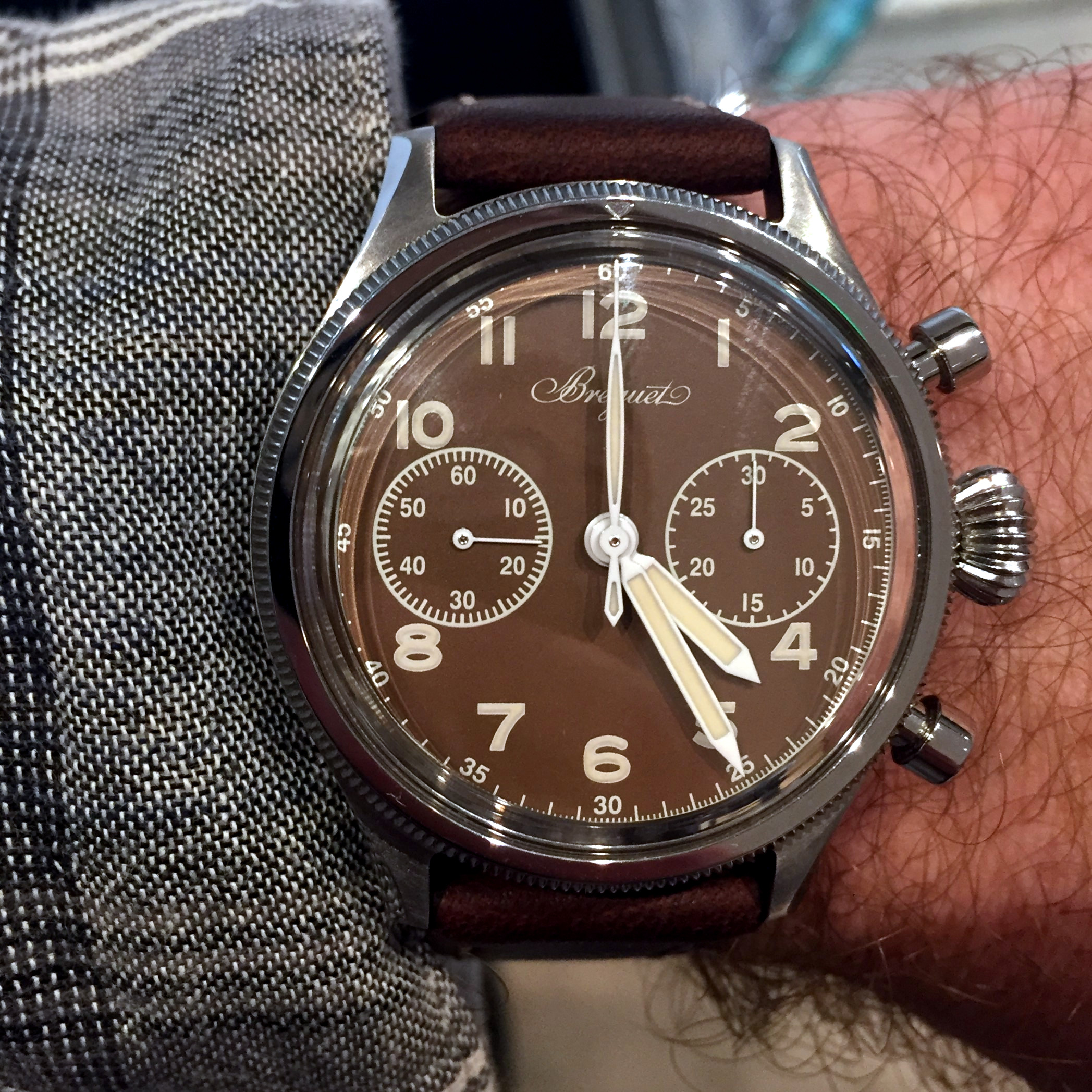
Breguet Type XX for OnlyWatch 2019, note the oversize crown
More recent additions to watch manufacturing often reflect their owners’ passion for aviation in novel and interesting ways: consider the success of Bell & Ross, which bases its signature designs on the instrumentation panels of aircraft, or Bremont who often create limited edition pieces containing parts of historically significant aircraft including the Wright Flyer, Concorde, and Howard Hughes’ Spruce Goose.
Despite all this, it is interesting to note that until relatively recently when it was launched in 2012, there was not in fact an international “standard” for pilots watches in the way that there is ISO 6425 for diving watches. That is until Lothar Schmidt, owner of Sinn Spezialuhren, took the initiative to establish the TeStaF standard – TeStaF is a German abbreviation for ‘Technischer Standard Fliegeruhren’ or Technical Standard for Pilot’s Watches – in conjunction with Professor Dr. Frank Janser of the Aachen University of Applied Sciences.
The objective of creating this standard was to define a clear specification defining the requirements during flight, splitting them into the following categories:
1. Functionality: required functions for both visual and instrument flight, accuracy and power reserve
2. Resistance to external stress: pressure changes, temperature changes, shock resistance, water or fluid resistance, and anti-magnetic properties
3. Safety and compatibility with other instruments: no interference from the watch on avionic instruments, anti-reflective, secure fastening
You can read more about the TeStaF standard here.
Finally, let’s take a quick look at some other examples of pilots’ watches. The Patek Philippe Calatrava Pilot Travel Time 5524R is a celebration of aviation watches from years gone by and includes an additional time zone indication. The hands (including the GMT-hand) and numerals are shown in a colour which contrasts against a darker dial, making for a clearly legible timepiece.
The Rolex GMT-Master II is a descendant of the original GMT-Master from the 1950s with its 24-hour bezel and GMT hand. Today these are incredibly popular and can entail a relatively long wait through authorised retailers and boutiques and sell for a premium on the preowned market.
The Moser Heritage Pilot’s watch is based on timepieces from 1920s, and so they have chosen to include a slightly larger ‘onion’ style crown. The rest of the watch exhibits the minimalist approach commonplace with H. Moser & Cie timepieces, although again the distinctive blue fumé dial is a darker colour with contrasting hands and numerals. Each of the three pieces shown below is coated with luminescent material to facilitate high legibility at night, too.
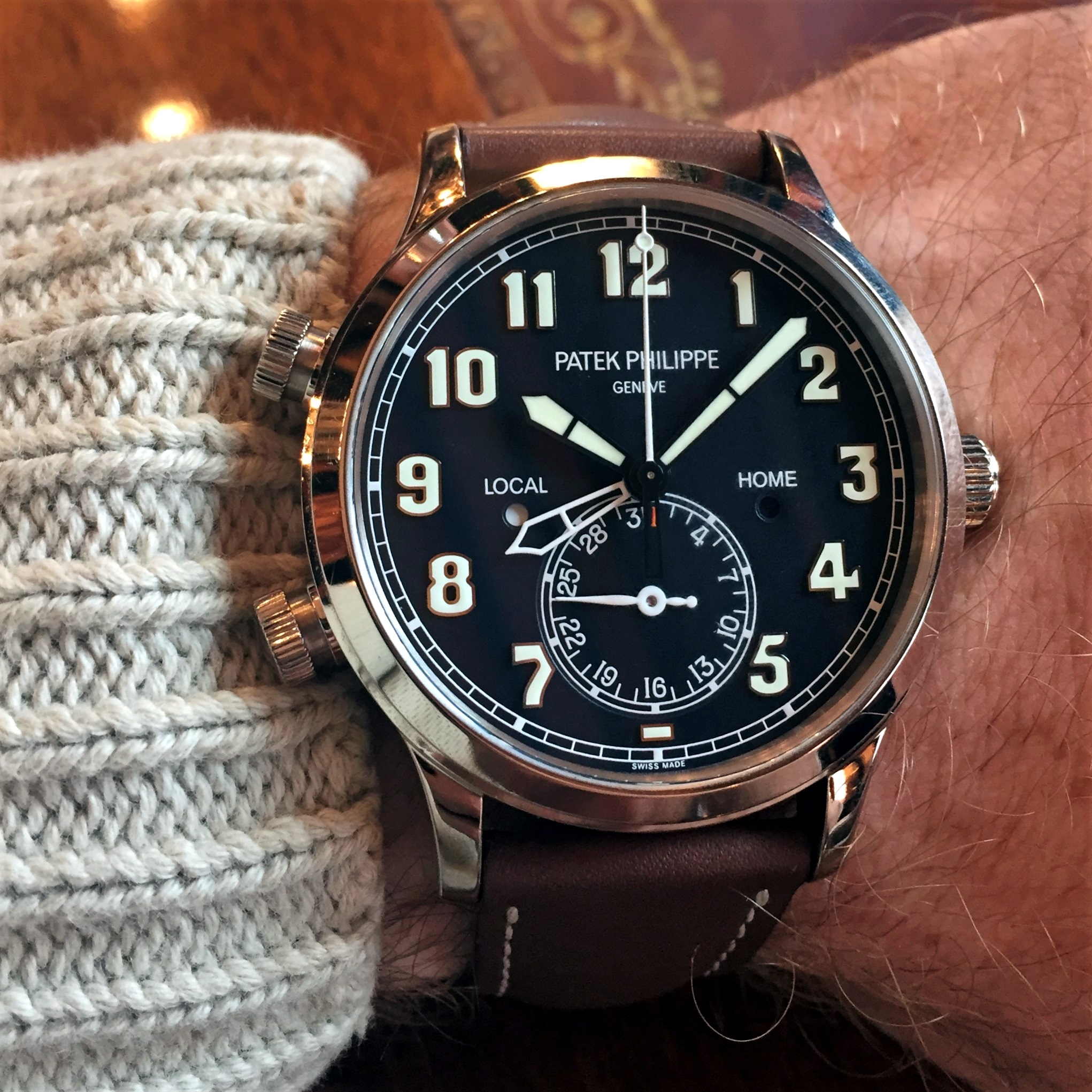
Patek Philippe 5524R-001
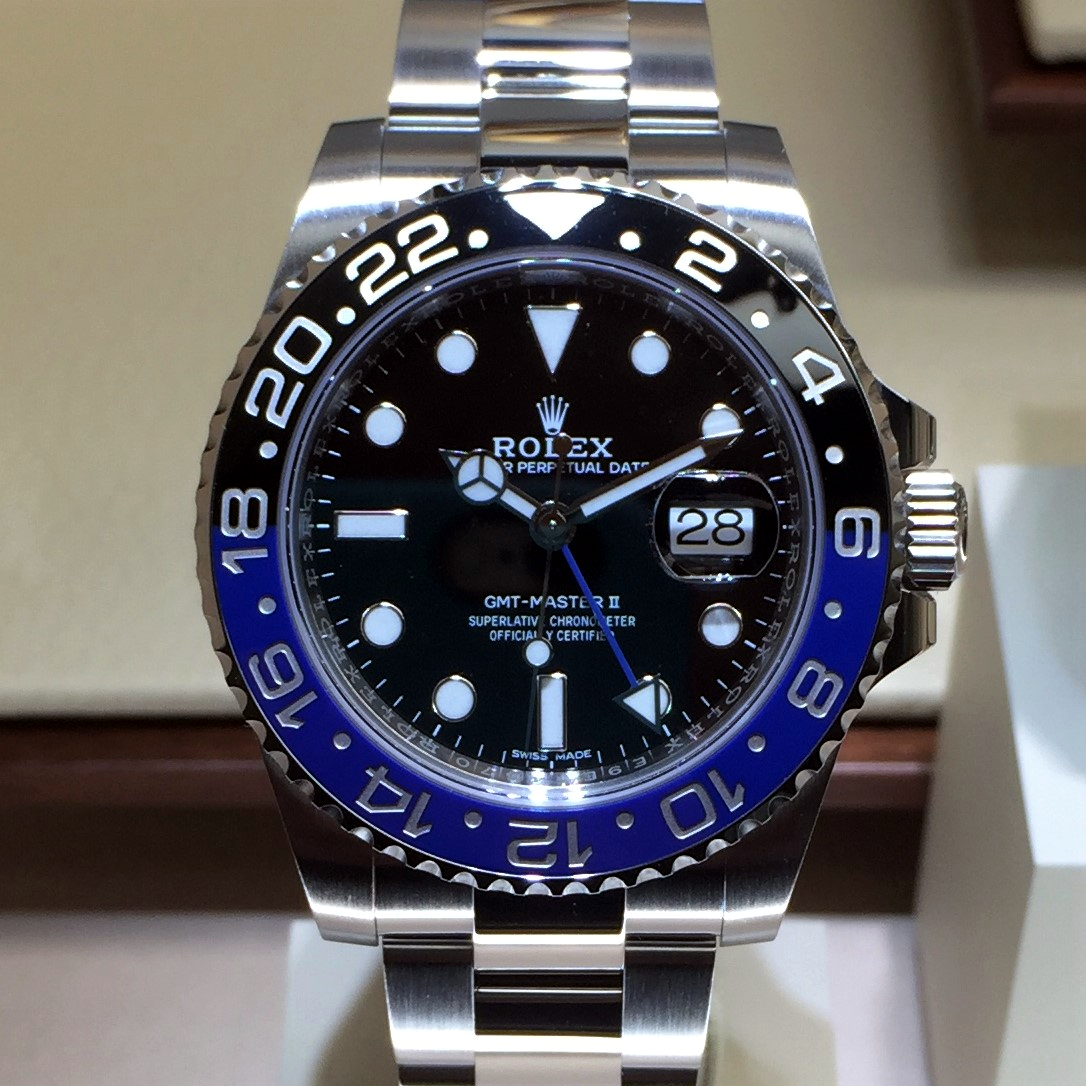
Rolex GMT-Master II 116710BLNR-0002
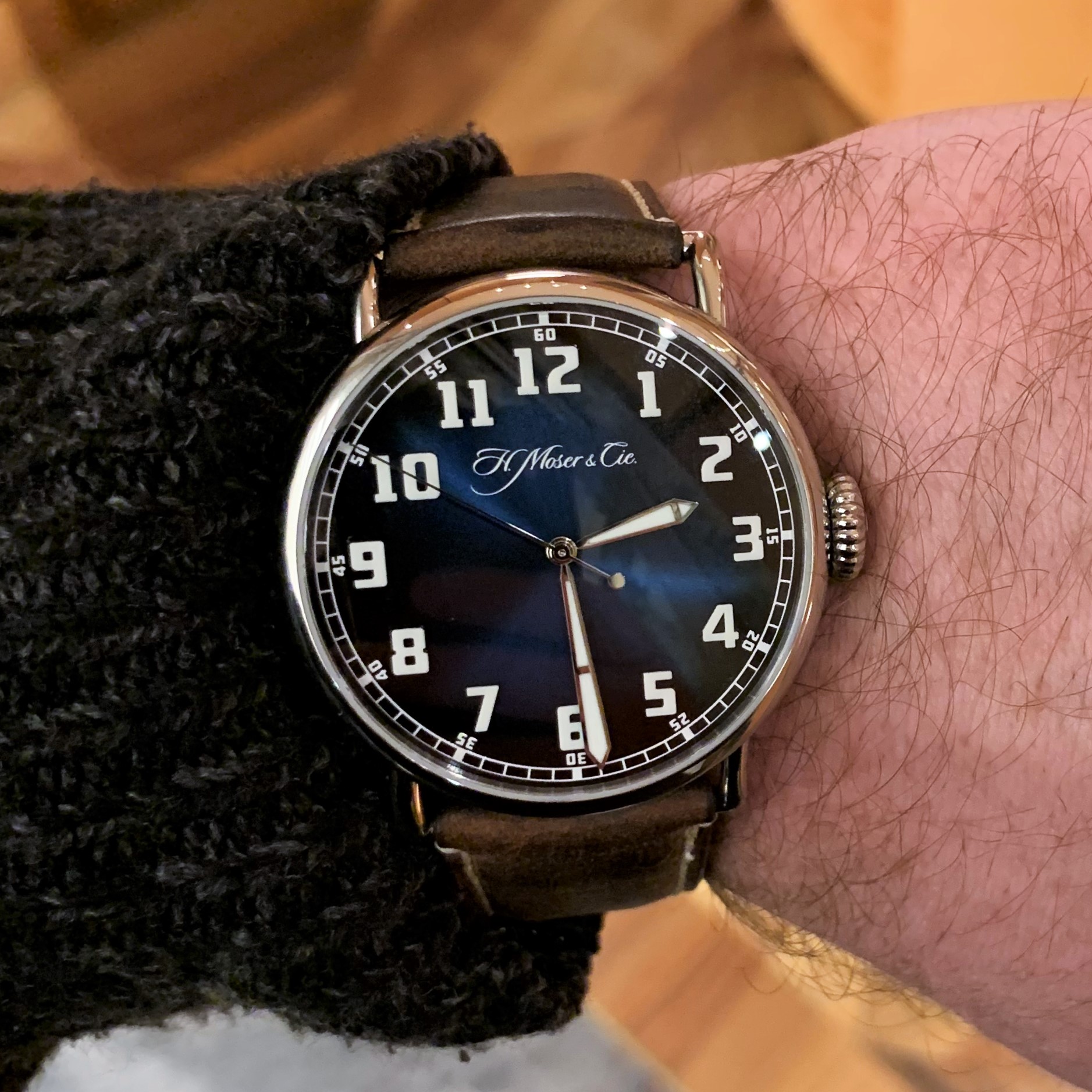
Moser Heritage Pilot
There are of course many, many more manufacturers out there with pilots’ watches available in countless styles and varieties. I hope that you have found this article useful in explaining more generally what constitutes a pilot’s watch, and the different characteristics to look out for.
A huge thank you to @tickertalker for sharing his expertise and photographs in this article!
If you have any questions, please get in touch via our Contact page, or via our Instagram.
You might also be interested in:
- Spotlight: 9 by IWC
- My Spotlight: Omega Speedmaster ‘Tintin’
- “It’s complicated”: an introduction to GMT/Travel/Worldtimer Watches
- Watch Stationery and Gift Ideas
- Watch Books, Watch Boxes and more at the Watch Affinity Shop on Amazon (commissions earned)
As an Amazon Associate, I earn from qualifying purchases – thank you for your support

